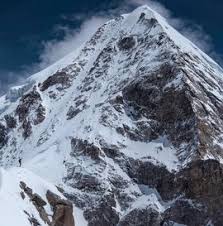Overview
- Located in the state of Himachal Pradesh, Papsura is one of the most challenging peaks to climb
- Standing at an elevation of 6,451 meters (21164.7 feet)
- Climb the Peak of Evil Mount Papsura
- Visit of Kasol village one of the most famous villages in Himachal.
- The challenge and adrenaline rush of climbing Papsura attracts adventurers and mountaineers from around the world, seeking a memorable and challenging expedition
- Climbing Mont Papsura is a test of endurance, technical skills, and mental strength, making it an attractive challenge for experienced climbers.
- Trek in the Parvati Valley of Kullu
- The peak provides a unique opportunity to explore the beautiful
Papsura (6,451 m / 21,164.7 ft), often called the "Peak of Evil," is a striking, glaciated peak in the Parvati Valley region of Himachal Pradesh, India, near the Spiti–Parvati divide. It's a remote and challenging peak requiring advanced mountaineering skills.
Below is a suggested itinerary to climb Papsura, starting from Manali. This is a technical expedition, so climbers need to be well-acclimatized, experienced in glacier travel, and ideally accompanied by local guides or mountaineering professionals.
PAPSURA ITINERARY FROM MANALI (Approx. 20–25 days)
Day 1: Arrive in Manali (2,050 m)
Rest, last-minute shopping
Gear check and acclimatization
Day 2: Manali – Tosh (2,400 m) via Kasol
5–6 hours by road
Night stay in Tosh village
Day 3: Tosh – Kuta Thatch
Begin trek through lush meadows and forests
5–6 hour moderate trek
Day 4: Kuta Thatch – Mantalai Lake (4,100 m)
Enter alpine zone, follow Parvati River
Tough terrain, 7–8 hours
Day 5: Rest and acclimatization at Mantalai
Practice basic ropework and glacier movement if needed
Day 6–8: Mantalai – Pin Parvati Pass (5,319 m)
Steep ascent, glacier travel begins
Setup high camp near the pass
Day 9–10: Descend into Pin Valley side / setup base camp for Papsura
Trek across remote terrain to base of Papsura
Establish Base Camp (~4,800–5,000 m)
CLIMBING PHASE (10–12 Days)
Day 11–22: Papsura Summit Push
Establish:
Camp 1 (~5,400 m)
Camp 2 (~6,000 m) on the glacier
Use alpine techniques: fixed rope, ice climbing
Summit Day: Long and strenuous climb over steep snow/ice sections
Descend to Base Camp after summit
PAPSURA EXPEDITION – COMPLETE PACKING LIST
PERSONAL GEAR
Backpack (60–70L)
Daypack (20–30L)
Duffel bag (for porters/mules)
CLOTHING
Base Layers:
2–3 synthetic or merino wool thermal tops
2 thermal bottoms
Insulation Layers:
1 fleece jacket
1 heavy down jacket (rated for -10°C to -20°C)
Outer Layers:
Waterproof, windproof shell jacket (Gore-Tex or similar)
Waterproof pants (preferably with side zips)
Lower Body:
2 trekking pants (quick-dry)
1 pair of insulated pants (for high camp and summit)
3–4 quick-dry underwear
Fleece leggings or inner thermal pants
Headwear:
Warm woolen or fleece beanie
Balaclava or neck gaiter (2)
Wide-brim sun hat or cap
Glacier sunglasses (Category 4, high UV protection)
Handwear:
1 pair of inner liner gloves (fleece/synthetic)
1 pair of waterproof outer gloves (insulated)
1 pair of expedition mittens (for summit day)
Footwear:
Waterproof trekking boots (broken-in)
Double-layered mountaineering boots (for 6,000+ m climbs)
Camp shoes or sandals
4–5 pairs of woolen trekking socks
2–3 pairs of liner socks
Gaiters (for snow travel)
CLIMBING EQUIPMENT
(Confirm with your guide/agency what is provided and what you must bring yourself)
Climbing harness
Helmet
Ice axe (technical or basic, depending on route)
Crampons (compatible with your mountaineering boots)
Ascender (jumar)
Belay/rappel device (figure 8 or ATC)
2–3 carabiners (locking and non-locking)
Prusik loops / accessory cords
Mountaineering rope (shared by the team)
Ice screws / snow stakes (group gear)
Personal anchor system or daisy chain
CAMPING AND SLEEPING GEAR
Sleeping bag (rated to -20°C to -30°C)
Insulated sleeping mat (foam or inflatable)
Trekking poles (collapsible, with snow baskets)
Water bottles (2 liters total) and thermos flask
Mug, bowl, spoon (lightweight and durable)
Dry bags or stuff sacks (for organization)
Repair tape or kit (duct tape, etc.)
Headlamp with extra batteries
HYGIENE AND FIRST AID
Sunscreen (SPF 50+)
Lip balm with SPF
Toothbrush, toothpaste, biodegradable soap
Toilet paper or tissue packs
Hand sanitizer
Quick-dry towel
Nail clipper, tweezers
Personal First Aid Kit:
Diamox (acetazolamide) – for altitude sickness
Ibuprofen or paracetamol – for pain relief
Antiseptic ointment
Anti-diarrheal medicine (e.g. loperamide)
Anti-nausea pills (e.g. domperidone)
Blister kit – moleskin, Compeed, etc.
Electrolyte sachets
Personal prescription medicines
Crepe bandage or compression wrap
MISCELLANEOUS ITEMS
Power bank or solar charger
Camera or action cam with spare batteries
Notebook and pen
Lighter or waterproof matches
Trash bags (pack out all waste)
ID, passport, expedition permits (originals and photocopies)
Small lock (for duffel bags)
OPTIONAL BUT RECOMMENDED
GPS watch / altimeter
Multi-tool or Swiss Army knife
Reading material, playing cards (for rest days)
Extra batteries (cold reduces battery life quickly)
Ice screw holster (for technical sections)
ITEMS TO AVOID
Cotton clothes (they absorb moisture and don't dry quickly)
Jeans or fashion items
Casual sunglasses (not UV rated for glaciers)
Overpacking – prioritize essentials and lightweight gear

